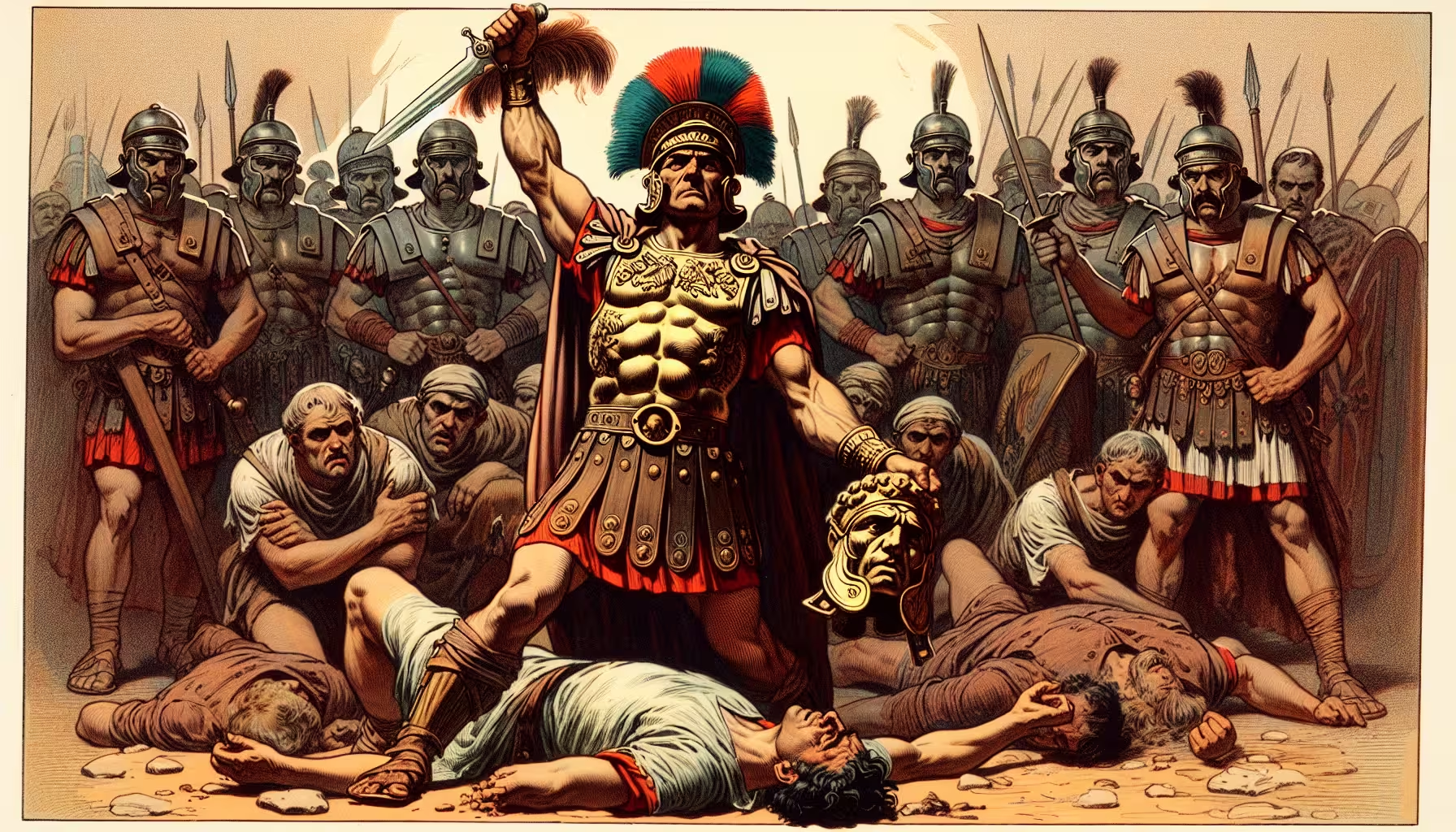
Firmus was a Berber chieftain who led a rebellion against the Roman Empire in the 4th century. He is known for his fierce resistance against the Roman forces in North Africa. Firmus was significant as a legendary figure due to his determination to fight against the powerful Roman Empire, and his rebellion marked a significant challenge to Roman rule in the region. His ultimate defeat and decision to commit suicide marked the end of his rebellion and solidified his status as a legendary figure in historical narratives. Discover the story of Firmus, a legendary rebel who stood against the might of the Roman Empire in North Africa.
Introduction
Firmus, a Berber chieftain and nobleman, rose to prominence in the fourth century as a fierce warrior and formidable leader. With a deep-seated resentment towards Roman rule, Firmus led a rebellion against the oppressive forces of the Roman Empire in North Africa. Firmus and his followers fought tenaciously for their freedom, engaging in bloody battles and evoking fear in the hearts of the Roman soldiers. His rebellion sparked hope in the hearts of those who yearned for independence and instilled fear in the ruling Roman authorities. However, despite his valiant efforts, Firmus was ultimately defeated by the superior forces of the Roman army. With his last stronghold falling and his cause all but lost, Firmus made the fateful decision to take his own life, rather than submit to the humiliation of defeat and subjugation. The end of Firmus’s rebellion marked a significant turning point in Roman history, solidifying their control over North Africa and quelling the spirit of resistance that had once burned fiercely in the hearts of the Berber people. The tragic end of Firmus’s life serves as a poignant reminder of the enduring struggle for freedom and the price of defiance against an overwhelming power.
In 273 AD, Firmus, a Roman rebel leader in Mauretania, North Africa, was defeated by Roman forces and ultimately committed suicide, marking the end of his rebellion against the Roman Empire.
Firmus Rises to Rebellion
Firmus, a prominent leader in Roman-ruled Mauretania, had long harbored resentment towards the Roman forces that occupied his homeland. Fueled by a desire for independence, Firmus started to gather supporters and formed a rebellion against the Roman rule. His charismatic leadership and persuasive rhetoric quickly rallied many Mauretanians to his cause, and soon he had amassed a formidable army to challenge the might of Rome.
The Defeat and Downfall of Firmus
Despite his initial successes, Firmus soon found himself outmatched by the superior tactics and resources of the Roman forces. The rebellion suffered a series of defeats, and Firmus, facing the inevitable capture by the Romans, was left with little hope. In a final act of defiance, Firmus took his own life, marking the end of his rebellion and the beginning of his legacy as a tragic figure in Mauretanian history.
The End of an Era
With Firmus’ death, the rebellion quickly crumbled, and the Romans reasserted their control over Mauretania. The defeat of Firmus and his followers served as a grim reminder of the power dynamics at play in the ancient world, as well as the lengths to which individuals would go to fight for their independence. Though Firmus ultimately failed in his rebellion, his legacy lived on as a symbol of resistance against oppressive forces, inspiring future generations to continue the fight for freedom and sovereignty.
Did you know? Firmus, a Berber chieftain, rose up in rebellion against the Roman forces in North Africa in the 4th century. After a series of battles, the Romans defeated Firmus and his forces. Faced with capture and the shame of defeat, Firmus chose to commit suicide, putting an end to his rebellion. This marked the end of a significant chapter in the history of Roman rule in Africa.
Read more:
birth-of-firmus-numidian-roman-empireclassical-studies-and-military-tactics-education
firmus-from-rises-to-prominent-roman-commander
firmus-rebellion-defiance-against-roman-rule
firmus-north-african-symbol-of-resistance